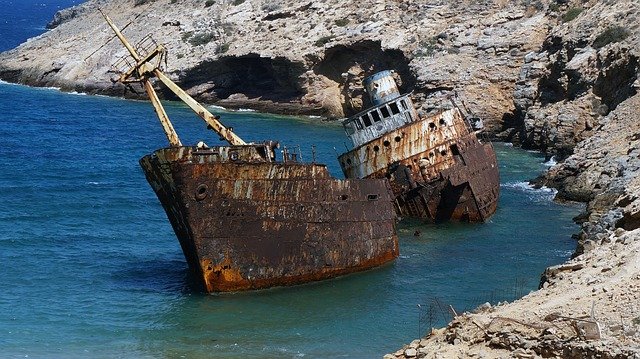
The Freight Shipping Industry
Alarming Trend due to COVID-19 – Maritime Piracy on the Rise
Read a summary using the INOMICS AI tool
Speaking of current issues under the influence of COVID-19, events on the water, or sea, which is another parallel world with its written and unwritten laws, are somewhat undeservedly forgotten. Looking at the latest data, we need to talk about a very worrying trend over the last year. Although global maritime piracy is not as high as between 2009 and 2012, in 2020 the number of pirate attacks and attempts has increased by 24% compared to 2019.
It is more difficult for poorer countries to fight piracy, as the global pandemic has further weakened their economies. In 2019, it seemed to everyone that there was a decline in maritime piracy, with the lowest number of attacks in the world in 25 years. However, this year showed the opposite. The global pandemic did not weaken the occupation, but allowed it to flourish again. This, in turn, opened up new opportunities for maritime piracy.
Due to restrictions, low trade and diseases, there are fewer crew members on board. Reduced global consumer spending means a drop in trade, which gives companies less revenue to provide greater protection on board ships, such as armaments or other equipment against attacks. As a result, ships are likely to become an easier target for sea pirates.

Profile of a pirate from our century
Nowadays, pirates do not sail with big ships, do not wear tricorn hats like in movies and do not fly pirate flags. Modern sea pirates travel in small high-speed motorboats. Their goal is to stop quickly and rob a slower ship. Pirates are usually well-armed with firearms. The pirates aim to hijack parts, oil, crew members' personal valuables, and communication equipment - anything that can later be sold on the black market for money. In more severe cases, pirates take the ship's crew hostage for later ransom.
One third of pirate attacks take place on large container ships and tankers. This type of attack is usually planned in advance, but ships are observed and tracked. One of the reasons for robbery is that criminals need resources and weapons for their fights on land, which is why ships passing by or nearby are robbed.
Which countries are affected?
A lot of maritime piracy affects poor countries with weak economies, weak leaders, poverty and official corruption. These include South America, Venezuela, Brazil, West Africa, Nigeria, Somalia, Yemen, Guinea, etc. These countries are also experiencing a particularly high outbreak of COVID-19, which is why the government is now focusing more on what is happening on land, while forgetting about the situation at sea.
Ecuador, for example, is not a pirate's favourite place at sea, but armed robbers regularly attack ships in and around the port of Guayaquil. It is the seventh busiest port in Latin America, handling most of Ecuador's agricultural and industrial imports and exports.
Cases of piracy have also doubled across Asia, with 50 incidents in the region in the first half of the year, compared with 25 in the same period in 2019. The Singapore Strait, one of the world's busiest commercial routes, has experienced 16 incidents between January and June. The number of attacks has also increased in Bangladesh, India, Indonesia, the Philippines, Vietnam and the South China Sea. Meanwhile, the International Maritime Bureau (IMB) reports that a total of 77 seafarers have been taken hostage or abducted for ransom since January. This highlights, for example, the Gulf of Guinea near West Africa, which accounts for just over 90% of all hijackings in the world.
Meanwhile, in 2008, the large area of the Gulf of Aden off the coast of East Africa became the most dangerous place in the world due to pirate attacks. Somali pirates regularly hijacked large commercial ships for five years. The situation was stabilized by 2019, but there is no longer any certainty as to how things can change in the near future. In Southeast Asia, better and more coordinated air and maritime surveillance has reduced the threat of piracy through better coordination between national governments.
As a result of these efforts, the number of attacks and attempts in the world has dropped significantly over the last decade, from almost 450 incidents in 2010 to less than 165 incidents in 2019, which has been the lowest number of actual attacks and attempts since 1994. Ship hijacking, which is the most serious and visible form of maritime piracy, has also decreased since 2010. But already this year, about 200 pirate attacks have been registered in the world, drawing many ship-owners’ attention.
It is possible to follow the cases of maritime piracy attacks and the live piracy map on the website of the IMB Piracy Reporting Centre.
-
- Master-Studiengang
- Posted 1 week ago
Master in Economics and Finance
Starts 1 Sep at CEMFI in Madrid, Spanien
-
- PhD-Studiengang
- Posted 1 week ago
Ruhr Graduate School in Economics: fully funded PhD Program
Starts 1 Oct at Ruhr Graduate School in Economics (RGS Econ) in Dortmund, Deutschland
-
- PhD-Studiengang
- Posted 6 days ago
PhD Programme UCD School of Economics (MLitt+PhD)
Starts 1 Sep at University College Dublin in Dublin, Irland















